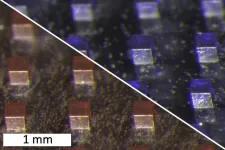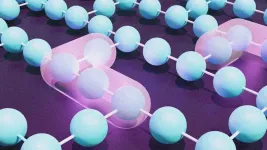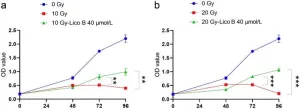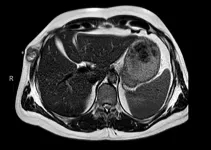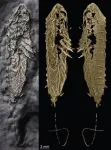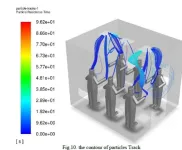Patients with late-stage cancer often have to endure multiple rounds of different types of treatment, which can cause unwanted side effects and may not always help.
In hopes of expanding the treatment options for those patients, MIT researchers have designed tiny particles that can be implanted at a tumor site, where they deliver two types of therapy: heat and chemotherapy.
This approach could avoid the side effects that often occur when chemotherapy is given intravenously, and the synergistic effect of the two therapies may extend the patient’s lifespan longer than giving one treatment at a time. In a study of mice, the researchers showed that this therapy completely eliminated tumors in most of the animals and significantly prolonged their survival.
“One of the examples where this particular technology could be useful is trying to control the growth of really fast-growing tumors,” says Ana Jaklenec, a principal investigator at MIT’s Koch Institute for Integrative Cancer Research. “The goal would be to gain some control over these tumors for patients that don't really have a lot of options, and this could either prolong their life or at least allow them to have a better quality of life during this period.”
Jaklenec is one of the senior authors of the new study, along with Angela Belcher, the James Mason Crafts Professor of Biological Engineering and Materials Science and Engineering and a member of the Koch Institute, and Robert Langer, an MIT Institute Professor and member of the Koch Institute. Maria Kanelli, a former MIT postdoc, is the lead author of the paper, which appears today in the journal ACS Nano.
Dual therapy
Patients with advanced tumors usually undergo a combination of treatments, including chemotherapy, surgery, and radiation. Phototherapy is a newer treatment that involves implanting or injecting particles that are heated with an external laser, raising their temperature enough to kill nearby tumor cells without damaging other tissue.
Current approaches to phototherapy in clinical trials make use of gold nanoparticles, which emit heat when exposed to near-infrared light.
The MIT team wanted to come up with a way to deliver phototherapy and chemotherapy together, which they thought could make the treatment process easier on the patient and might also have synergistic effects. They decided to use an inorganic material called molybdenum sulfide as the phototherapeutic agent. This material converts laser light to heat very efficiently, which means that low-powered lasers can be used.
To create a microparticle that could deliver both of these treatments, the researchers combined molybdenum disulfide nanosheets with either doxorubicin, a hydrophilic drug, or violacein, a hydrophobic drug. To make the particles, molybdenum disulfide and the chemotherapeutic are mixed with a polymer called polycaprolactone and then dried into a film that can be pressed into microparticles of different shapes and sizes.
For this study, the researchers created cubic particles with a width of 200 micrometers. Once injected into a tumor site, the particles remain there throughout the treatment. During each treatment cycle, an external near-infrared laser is used to heat up the particles. This laser can penetrate to a depth of a few millimeters to centimeters, with a local effect on the tissue.
“The advantage of this platform is that it can act on demand in a pulsatile manner,” Kanelli says. “You administer it once through an intratumoral injection, and then using an external laser source you can activate the platform, release the drug, and at the same time achieve thermal ablation of the tumor cells.”
To optimize the treatment protocol, the researchers used machine-learning algorithms to figure out the laser power, irradiation time, and concentration of the phototherapeutic agent that would lead to the best outcomes.
That led them to design a laser treatment cycle that lasts for about three minutes. During that time, the particles are heated to about 50 degrees Celsius, which is hot enough to kill tumor cells. Also at this temperature, the polymer matrix within the particles begins to melt, releasing some of the chemotherapy drug contained within the matrix.
“This machine-learning-optimized laser system really allows us to deploy low-dose, localized chemotherapy by leveraging the deep tissue penetration of near-infrared light for pulsatile, on-demand photothermal therapy. This synergistic effect results in low systemic toxicity compared to conventional chemotherapy regimens,” says Neelkanth Bardhan, a Break Through Cancer research scientist in the Belcher Lab, and second author of the paper.
Eliminating tumors
The researchers tested the microparticle treatment in mice that were injected with an aggressive type of cancer cells from triple-negative breast tumors. Once tumors formed, the researchers implanted about 25 microparticles per tumor, and then performed the laser treatment three times, with three days in between each treatment.
“This is a powerful demonstration of the usefulness of near-infrared-responsive material systems,” says Belcher, who, along with Bardhan, has previously worked on near-infrared imaging systems for diagnostic and treatment applications in ovarian cancer. “Controlling the drug release at timed intervals with light, after just one dose of particle injection, is a game changer for less painful treatment options and can lead to better patient compliance.”
In mice that received this treatment, the tumors were completely eradicated, and the mice lived much longer than those that were given either chemotherapy or phototherapy alone, or no treatment. Mice that underwent all three treatment cycles also fared much better than those that received just one laser treatment.
The polymer used to make the particles is biocompatible and has already been FDA-approved for medical devices. The researchers now hope to test the particles in larger animal models, with the goal of eventually evaluating them in clinical trials. They expect that this treatment could be useful for any type of solid tumor, including metastatic tumors.
The research was funded by the Bodossaki Foundation, the Onassis Foundation, a Mazumdar-Shaw International Oncology Fellowship, a National Cancer Institute Fellowship, and the Koch Institute Support (core) Grant from the National Cancer Institute.
###
Written by Anne Trafton, MIT News
Paper: A Machine Learning-Optimized System for Pulsatile, Photo- and Chemotherapeutic Treatment Using Near-Infrared Responsive MoS2-Based Microparticles in a Breast Cancer Model
https://pubs.acs.org/doi/10.1021/acsnano.4c07843
END
